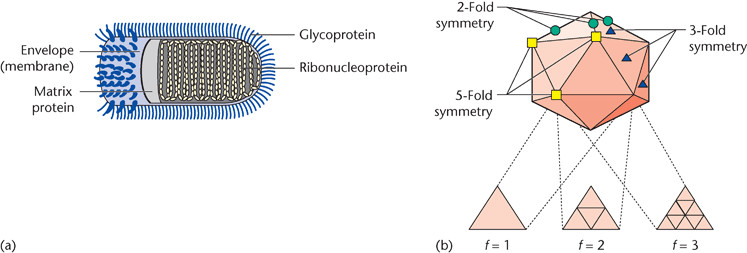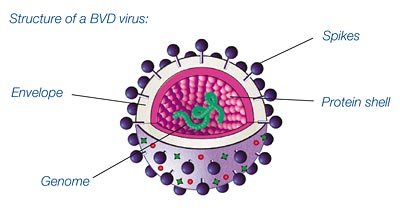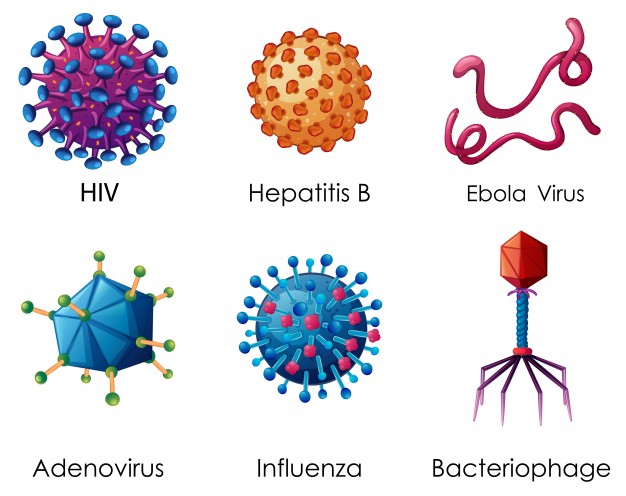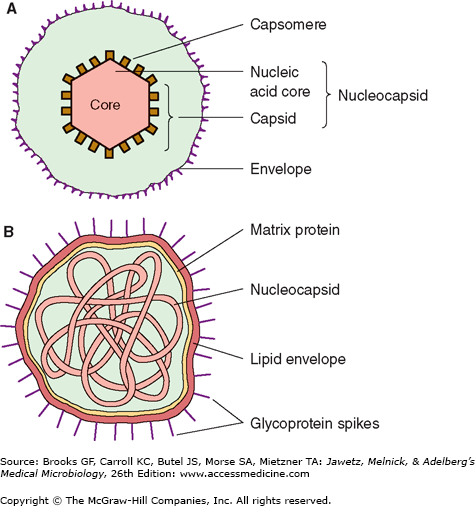We Are not Living Things But We Cause a Shitload of Diseases: Welcome to the World of Viruses
Fellow eSTEEMed,
Have you wondered what viruses are and if they are living things? Maybe you already know what they are but wouldnt you like some more information on viruses cause disease and what they are made up of? This post is just for you.
Introduction
Viruses are sub-microscopic, obligate intracellular parasites. Sub-microscopic means they are small, filterable through bacteria filters (which were known to be the smallest living organisms known) and their structures cannot be seen under a light microscope.
Viruses are not living things. They are particles assembled from pre-formed components>. So viruses do not grow like other microscopic organisms do as a result of increase of the integrated sum of their components. Viruses lack the genetic information which encodes the apparatus necessary for the generation of metabolic energy (ATP) or protein synthesis (ribosomes).
They are obligate intracellular parasites as they depend absolutely on the host cells to function. Outside the cells, viruses are inert and metabolically inactive.
PROPERTIES OF VIRUSES
Viruses have two main components which make up for everything in a particle. These are Proteins and Nucleic acid (the genetic material).
Viruses contain either DNA or RNA as the genetic material but not both. The nucleic acid usually has unique chemical and physical features which makes it different from human nucleic acid. A viral nucleic acid is much shorter compared to other nucleic acids found in a human cells and they code for only small number of proteins.
Viral nucleic acid is enclosed in a capsid, which accounts for most of the mass of the virus, made up of protein subunits called protomeres, which are aggregates of much smaller sub units called capsomers. Some species of viruses have a glycol-lipo-protein (carbohydrate, lipid and protein) and membrane surrounding the capsid called envelope, they are then called enveloped viruses. Those without envelopes are called naked viruses. The envelopes of these viruses also have glyco-protein spikes which have enzymatic, absorptive, hemaglutinning and antigenic activity.
What is the morphology of Viruses?
As mentioned earlier, viruses are not living things so they don’t have cell structures like microbes, then what is their morphology? The structure of a virus is determined by the arrangement of the protein units (protomers) that make up the capsid.
So there are two main structures of viruses are the Helical symmetry and Icosahedral symmetry. But there are some with complex strucures (Poxvirus).
Helical symmetry; just as the name suggests, the capsid is made of a helix. A helix is a stack of repeating units with a continuous relationship between the diameter (the amplitude) and the pitch. Some helixes are rigid (Tobacco mosaic virus) while others are flexible, thus this flexibility helps with preventing damage to the structure of the viral particle from bending. The length of each helix of a virus is determined by the size of the genome enclosed by the capsid.

Helical and Icosahedral structure of viruses
Icosahedral symmetry; this is a more complex structure compared to the helical symmetry. The protein units (protomers) are arranged in sort of spherical structure and the viral genome is contained in the hollow part of the structure. The structure is that of a icosahedron (20 triangles forming a solid shape like four triangles forming a tetrahedron) whose faces are arranged around the surface of a sphere. So to wonder, why don’t the viruses have a tetrahedron shape? Well, it is economic to produce small subunits of identical proteins in large quantities than producing large subunits of little quantities.
Enveloped Viruses
Virus undergoes replication to produce more virions (particles) inside cells. Naked viruses usually destroy the cells after maturation as they are released from the cell through lyses. But this is wasteful as it causes cell death. Therefore, some viruses now release from the cell through budding (extrusion). As they bud out from the cell, they get covered by an envelope which is from the cell membrane (the lipid bilayer) i.e. the envelope is almost the same as the lipid bilayer in composition.

Bovine viral diarrhoea virus- an envelope virus
The viruses still have a capsid which is helical or icosahedral but is underneath the enveloped. The modification to the viral lipid bilayer is addition of different proteins to make the article active. These proteins include; the ligands for receptor recognition necessary for the entry of viruses into cell (viral infections), the matrix proteins that help link the capsid to the envelope lastly the glycoproteins necessary for binding of viruses to the host cell. Glycoproteins also form spikes which are antigenic.
The Viral Genome
The genome (nucleic acid present) of a virus is either made of Riblonucleic acid (RNA) or Deoxyriblonucleic acid (DNA). A virus cannot have both types of nucleic acids. These nucleic acids could be single stranded or double stranded. These strands could have a circular, linear or segmented configuration. Single strands could be positive sense [same sequence as the messenger RNA (mRNA) used in the protein synthesis], negative sense or ambisense (contains both senses). The size of viral genome ranges from 3500 to 2.4 million nucleotides.
Whatever the type of genome a virus has, its main function is to code for proteins and genomes for replication of viruses when inside an infected cell as they are obligate viruses and cannot replicate outside a cell. The genome present in the virus must be recognized by the host cell, therefore individual viruses have specific cells in which replication can take place.
Conclusion
Definitely, viruses are not living things and have specific cells to infect. They are really small (submicroscopic) and are of various types. Viruses have no potential to generate energy for biochemical processes. There is still a lot to know about viruses but I hope you’ve learnt something new. I hope to write on the replication and classifications on viruses next. So watch out for it to know how the sense of the genomes (single stranded) and receptors affect viral replication.
References
- Cann Principles of Molecular Virology by Alan J. Cann
- Clinical Microbiology made Ridiculously Simple by Mark Gladwin and Bill Trattler



Being A SteemStem Member
Wow, boss! You explained in such simple words
Great post. Really educative